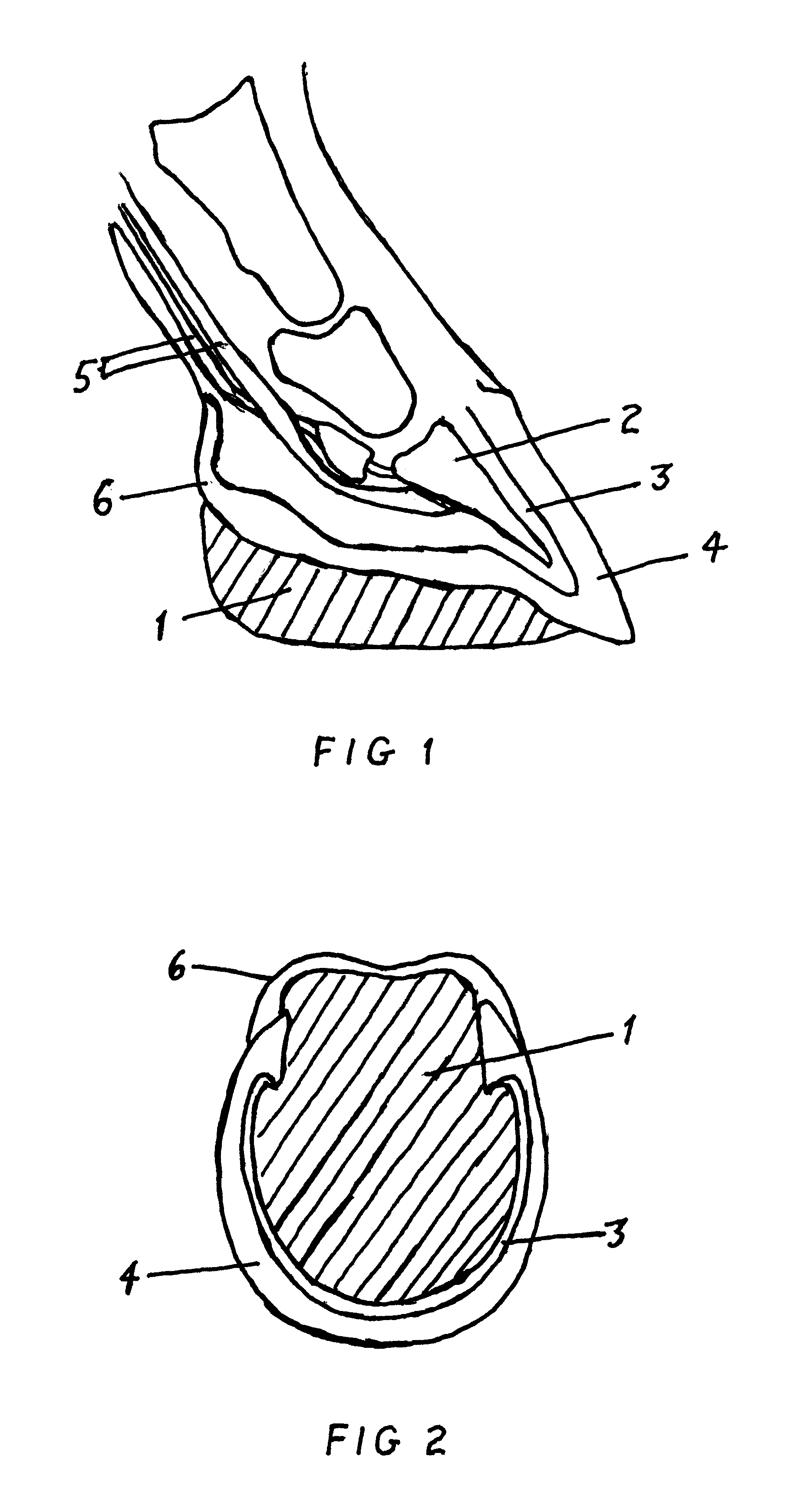Method of treatment for founder and laminitis in the equine hoof
a technology of founder and laminitis and treatment method, which is applied in the field of farm animals, can solve the problems of increasing and perpetuating damage, pulling the coffin bone more, and doing nothing to correct the deformation of the hoof wall, and achieves the effect of reducing the tension on the tendons
- Summary
- Abstract
- Description
- Claims
- Application Information
AI Technical Summary
Benefits of technology
Problems solved by technology
Method used
Image
Examples
Embodiment Construction
The underside of an equine hoof is in a U shape as shown in FIG. 2. The shape of the hoof wall (4) normally conforms to the shape of the coffin bone (2). Normally the lamina (3) joining the two is of even thickness about a quarter inch wide the entire perimeter. When an equine hoof founders, the laminae (3) in front widen as the hoof wall separates from the coffin bone (2). In order for the hoof to be allowed to grow back normally, the coffin bone(2) must be supported while the hoof wall (4) remains unsupported.
The treatment method of the invention requires that a plastic form (1) be molded to the underside of the sole of the hoof inside the laminae or white line (FIG. 2, number 3), and the hoof wall (FIG. 2, number 4). The form (1) itself should not adhere to the sole, but should be capable of being removed for cleaning and reinstallation. The hoof wall (4) can then be kept trimmed so as not to contact the ground surface.
The preferred material for the invention is a formable plasti...
PUM
 Login to View More
Login to View More Abstract
Description
Claims
Application Information
 Login to View More
Login to View More - R&D
- Intellectual Property
- Life Sciences
- Materials
- Tech Scout
- Unparalleled Data Quality
- Higher Quality Content
- 60% Fewer Hallucinations
Browse by: Latest US Patents, China's latest patents, Technical Efficacy Thesaurus, Application Domain, Technology Topic, Popular Technical Reports.
© 2025 PatSnap. All rights reserved.Legal|Privacy policy|Modern Slavery Act Transparency Statement|Sitemap|About US| Contact US: help@patsnap.com


